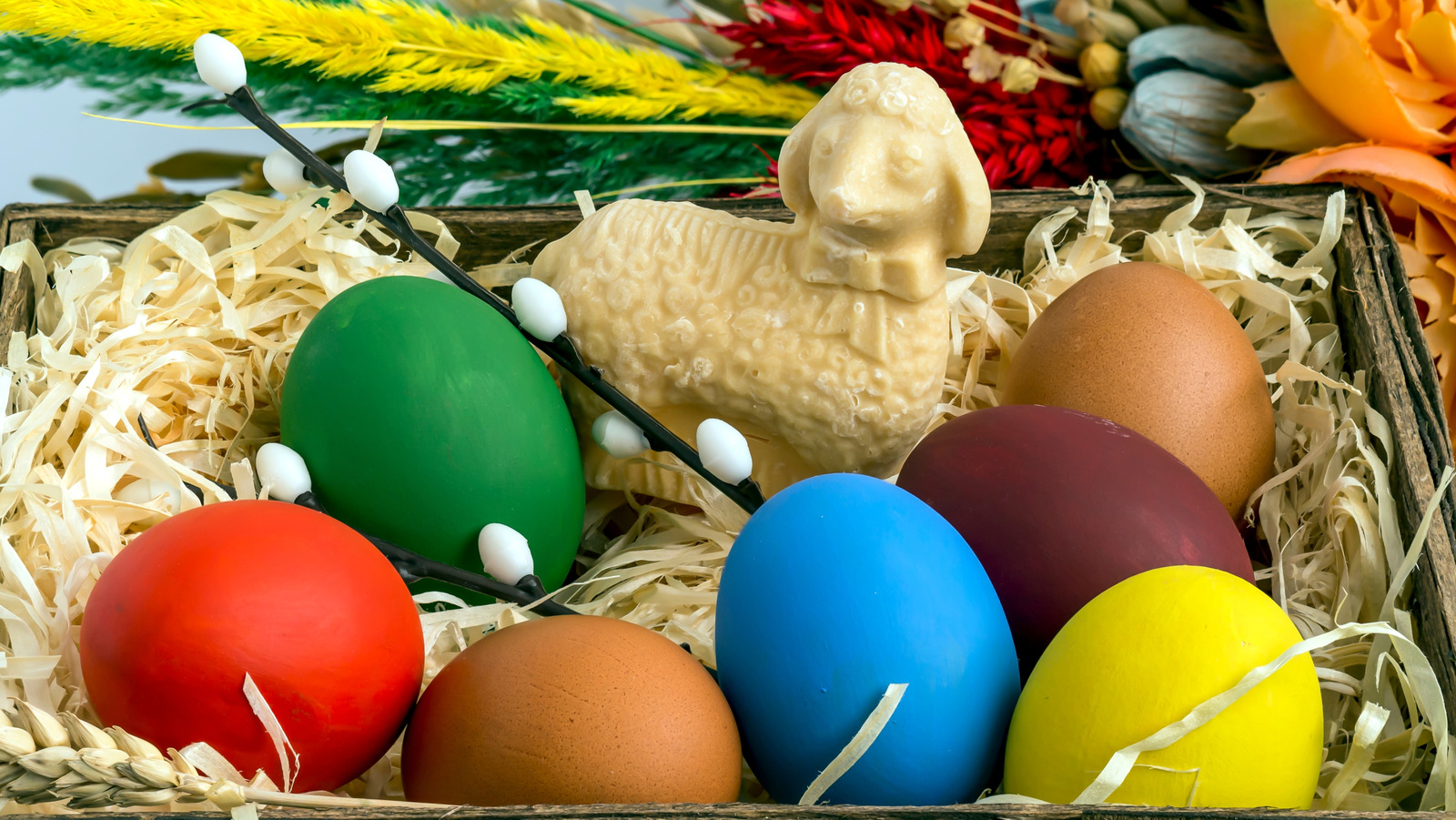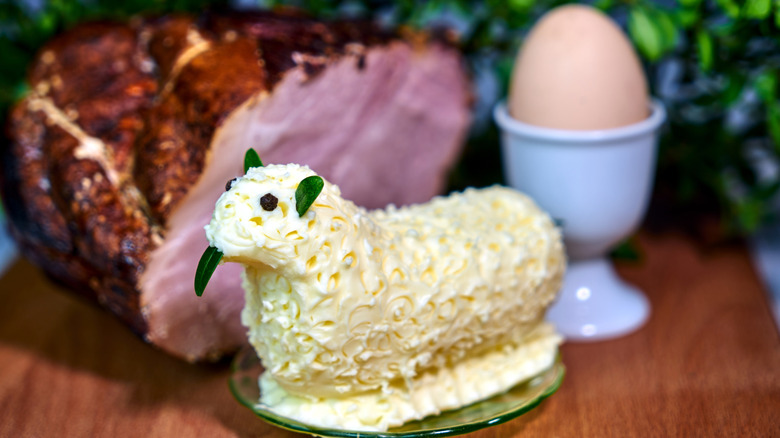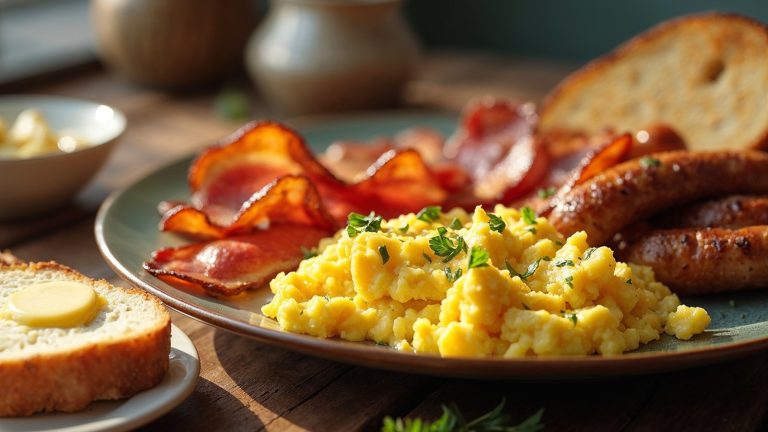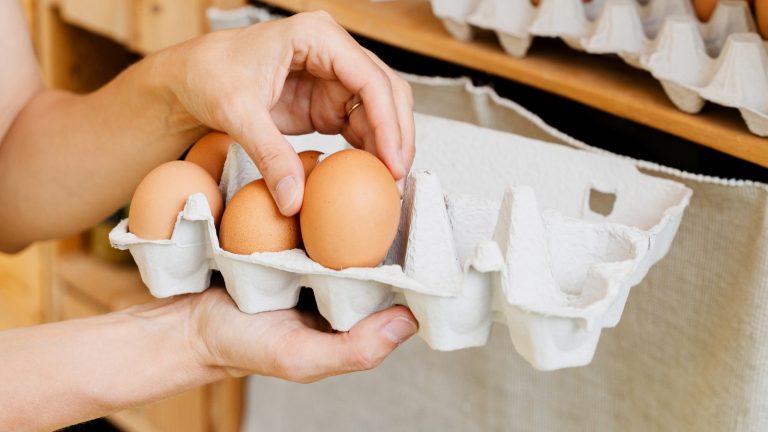We may receive a commission on purchases made from links.
There’s perhaps no holiday that represents spring more iconically than Easter. Though its origins are decidedly Christian, in the secular world, Easter is most associated with egg hunts and adorable bunny rabbits, many of them in chocolate form. In fact, the holiday provides ample opportunity to turn confections into critters, though many have a different Easter treat of choice: the butter lamb.
If you’ve never heard of a butter lamb, you probably didn’t grow up in Buffalo, New York, or those areas in the American Midwest with large Polish populations. It is exactly what it sounds like: a little wavy-coated lamb molded out of butter, which you could then use to spread on pancakes or bread. In certain parts of the country, the butter lamb is often found at the center of the Easter feast for Catholic families of Polish, Russian, and Slovenian ancestry. As Easter marks the end of the Lenten season (as well as the arrival of spring), it’s customary to celebrate by eating lots of eggs, meat, and dairy, including butter.
Unlike the more mysterious origins of Easter candy baskets, butter lambs can be traced back quite clearly to Eastern European Catholic traditions, which were then carried over to the U.S. via immigration. As these lambs are a Christian symbol meant to represent the sacrifice of Jesus Christ (called the “Lamb of God” in scripture), they frequently found their way into Catholic Easter festivities as far back as the 17th century, in the form of sugar, bread, or butter sculptures. However, some claim it goes as far back as the Middle Ages.
Butter lambs became popular in Buffalo before expanding across the US
Though butter lambs may be seen on Easter tables across the U.S., especially in the Midwest, the tradition is undoubtedly centralized in Buffalo, New York, largely thanks to the work of one woman: Dorothy Malczewski. According to the official Malczewski’s Butter Lambs website, Malczewski began selling her signature butter lambs at Buffalo’s Broadway Market in 1963, after finding her father’s old lamb mold from Poland in the family’s attic. Following their smashing success, she began distributing butter to other grocery stores, including regional chains like Wegmans.
The business remained in the Malczewski family until 2012, when it was sold to Camellia Meats, another Polish-run family business based out of Buffalo. These days, devoted customers continue to purchase Malczewski’s signature lambs — which feature peppercorn eyes, a red ribbon, and an “Alleluia” flag — at the Broadway Market and local grocery stores throughout the Midwestern and Northeastern United States.
While Malczewski’s is by far the most popular brand selling store-bought butter lambs for Easter, they’re also fun and easy to make at home. All you need is a Wooden Lamb Butter Mold and a few sticks of softened butter. Press the butter into the mold, then chill or freeze it (here’s the smartest way to freeze your butter) before removing the mold and enjoying your Easter celebration with a touch of Polish tradition.






